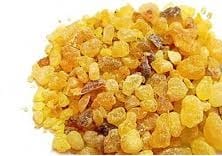
Pain is an inevitable part of life, but that doesn’t mean you always need to rely on over-the-counter medications to find relief. Nature has provided us with a treasure trove of medicinal herbs that can help alleviate pain effectively and naturally. In this comprehensive guide, we’ll explore the world of herbal pain relief, offering you practical, home-based remedies that are easy to use and highly effective. Whether you’re dealing with chronic pain, muscle soreness, or a sudden headache, this manual will equip you with the knowledge to harness the power of herbs for pain management.
Why Choose Herbal Remedies for Pain Relief?
Before diving into the remedies, let’s address why herbal pain relief is worth considering:
- Natural and Gentle: Herbs are derived from nature, making them a gentler alternative to synthetic drugs.
- Fewer Side Effects: Unlike many pharmaceutical options, herbal remedies often come with minimal side effects when used correctly.They are less likely to cause liver damage,kidney issues,or stomach ulcers.
- Holistic Healing: Herbs not only address pain but also promote overall wellness by supporting the body’s natural healing processes.
- Cost-Effective: Most herbal remedies are affordable and can be prepared at home with simple ingredients.
- Long-Term Benefits:Unlike chemical – based painkillers .herbal remedies support overall well-being by improving circulation, reducing stress, and promoting healing.They are non-addictive and support natural healing , making them a safer long term alternative for managing pain and inflammation.
When We Feel Pain: Understanding the Body’s Signals
Pain is your body’s way of signaling that something is wrong. Whether it’s acute (short-term, like a sprain) or chronic (long-term, like arthritis), pain disrupts daily life. Herbal remedies work by targeting the root causes of pain—inflammation, muscle tension, nerve irritation, or poor circulation—while soothing discomfort naturally.
How Do Herbal Remedies Work? The Science Behind the Relief
Herbs contain bioactive compounds that interact with your body’s systems to reduce pain. Here’s a quick breakdown of their mechanisms:
- Anti-inflammatory Action: Herbs like turmeric and ginger inhibit enzymes (e.g., COX-2) that trigger inflammation.
- Antioxidant Boost: Many herbs neutralize free radicals, reducing oxidative stress linked to chronic pain.
- Pain Signal Blocking: Capsaicin in cayenne pepper depletes “substance P,” a chemical that transmits pain signals to the brain.
- Muscle Relaxation: Herbs like valerian and chamomile ease muscle spasms and tension.
- Improved Circulation: Ginkgo biloba and cinnamon enhance blood flow, promoting faster healing.
Top Herbs for Pain Relief
Here’s a list of the most effective herbs for pain relief, along with their benefits and how to use them:
- 1. Turmeric: The Golden Healer
- Turmeric, a vibrant yellow spice, contains curcumin, a powerful anti-inflammatory compound. It’s particularly effective for joint pain, arthritis, and muscle soreness.
- How to Use:
- Mix 1 teaspoon of turmeric powder with warm milk (or a plant-based alternative) and drink it daily.
- Apply a turmeric paste (turmeric + water) to inflamed areas for topical relief.
- Pro Tip: Add a pinch of black pepper to enhance curcumin absorption.
- 2. Ginger: Nature’s Anti-Inflammatory
- Ginger is renowned for its ability to reduce inflammation and alleviate pain, especially in conditions like osteoarthritis and migraines.
- How to Use:
- Brew ginger tea by steeping fresh ginger slices in hot water for 10 minutes.
- Apply ginger oil to sore muscles for a warming, soothing effect.
- 3. Willow Bark: The Original Aspirin
- Willow bark has been used for centuries to relieve pain and inflammation. It contains salicin, a compound similar to aspirin.
- How to Use:
- Steep 1-2 teaspoons of dried willow bark in hot water for 10 minutes to make a tea.
- Use willow bark extract as directed by a healthcare professional.
- Caution: Avoid willow bark if you’re allergic to aspirin or taking blood-thinning medications.
- 4. Lavender: Calming and Pain-Relieving
- Lavender isn’t just for relaxation—it’s also a potent pain reliever, especially for headaches and nerve pain.
- How to Use:
- Inhale lavender essential oil by adding a few drops to a diffuser.
- Massage diluted lavender oil onto temples for headache relief.
- 5. Cayenne Pepper: The Heat That Heals
- Cayenne pepper contains capsaicin, which helps reduce pain by depleting substance P, a chemical that transmits pain signals.
- How to Use:
- Mix cayenne pepper powder with coconut oil to create a warming balm for sore muscles.
- Use capsaicin creams available in stores for targeted pain relief.
- 6. Boswellia Serrata: The Joint Savior
- Boswellia serrata, also known as Indian frankincense, is a powerhouse for joint health. Its active compounds (boswellic acids) block inflammatory enzymes and improve mobility.
- How to Use:
- Take standardized Boswellia extract (300–500 mg daily) for chronic joint pain.
- Combine Boswellia resin with coconut oil for a topical anti-inflammatory balm.

DIY Herbal Remedies for Common Pain Conditions
- 1. Herbal Compress for Muscle Pain
- A warm herbal compress can work wonders for sore muscles and stiffness.
- Ingredients:
- 1 cup Epsom salt
- 2 tablespoons dried rosemary
- 2 tablespoons dried lavender
- Hot water
- Instructions:
- Mix the ingredients in a bowl.
- Soak a clean cloth in the mixture, wring out excess liquid, and apply to the affected area.
- Leave it on for 15-20 minutes.
- 2. Herbal Tea Blend for Joint Pain
- Ingredients:
- This soothing tea blend combines anti-inflammatory herbs to ease joint pain.
- 1 teaspoon turmeric powder
- 1 teaspoon ginger (fresh or dried)
- 1 teaspoon cinnamon
- 1 teaspoon honey (optional)
- Instructions:
- Boil 2 cups of water and add the herbs.
- Simmer for 10 minutes, strain, and add honey if desired.
- Drink daily for best results.
- 3. Herbal Salve for Back Pain
- Create a healing salve using herbs and natural oils to relieve back pain.
- Ingredients:
- 1/2 cup coconut oil
- 2 tablespoons beeswax
- 1 tablespoon dried arnica flowers
- 1 tablespoon dried comfrey leaves
- Instructions:
- Infuse the herbs in coconut oil by heating them together on low heat for 2 hours.
- Strain the oil and mix with melted beeswax.
- Pour into a jar and let it solidify. Apply to the affected area as needed.
- 4. Boswellia & Ginger Joint Relief Oil
- Ingredients:
- 1/4 cup carrier oil (e.g., jojoba or almond oil)
- 10 drops Boswellia serrata essential oil
- 10 drops ginger essential oil
- Instructions:
- Mix the oils in a dark glass bottle.
- Massage into stiff joints twice daily.
- 5. Devil’s Claw Muscle Rub
- Devil’s Claw is famed for its muscle-relaxing properties.
- Ingredients:
- 1/2 cup shea butter
- 1 tablespoon dried Devil’s Claw root
- 5 drops peppermint essential oil
- Instructions:
- Infuse Devil’s Claw in melted shea butter for 1 hour.
- Strain, add peppermint oil, and let it cool. Apply to sore muscles.
- 6. White Willow Bark Tincture for Headaches
- Ingredients:
- 1/2 cup dried white willow bark
- 1 cup vodka or apple cider vinegar
- Instructions:
- Soak willow bark in vodka/vinegar for 4 weeks in a dark place.
- Strain and take 1–2 ml diluted in water during headaches.
- 7. St. John’s Wort Nerve Pain Oil
- St. John’s Wort calms nerve-related pain like sciatica.
- Ingredients:
- Fresh St. John’s Wort flowers
- Olive oil
- Instructions:
- Fill a jar with flowers, cover with oil, and let sit in sunlight for 6 weeks.
- Strain and massage into areas with nerve pain.
Herbal Pain Relief: Dos and Don’ts
To ensure safe and effective use of herbal remedies, keep these tips in mind:
- Dos:
- Research each herb thoroughly before use.
- Start with small doses to test your body’s response.
- Consult a healthcare professional if you’re pregnant, nursing, or taking medications.
- Don’ts:
- Don’t overuse herbs—more isn’t always better.
- Avoid self-diagnosing serious conditions; seek medical advice when needed.
- Don’t mix herbs with medications without professional guidance.
Herbal Pain Relief vs. Conventional Medicine
| Aspect | Herbal Remedies | Conventional Medicine |
| Source | Natural plants and herbs | Synthetic chemicals |
| Side Effects | Minimal when used correctly | Can cause significant side effects |
| Cost | Affordable and accessible | Often expensive |
| Effectiveness | Gradual, long-term benefits | Immediate but short-term relief |
| Holistic Benefits | Supports overall wellness | Focuses on symptom management |
Frequently Asked Questions (FAQs)
- 1. Are herbal remedies safe for everyone?
- While generally safe, some herbs may interact with medications or conditions. Always consult a healthcare provider before starting any herbal regimen.
- 2. How long does it take for herbal remedies to work?
- Herbal remedies often take longer to show results compared to pharmaceuticals. Consistency is key—use them regularly for optimal benefits.
- 3. Can I grow these herbs at home?
- Absolutely! Herbs like turmeric, ginger, and lavender can be grown in your garden or even in pots indoors.
- 4. Can I combine herbal remedies with my prescription medications?
- Some herbs (e.g., willow bark, St. John’s Wort) interact with blood thinners or antidepressants. Always check with your doctor first.
- 5. Are herbal remedies safe for children?
- Certain herbs (like chamomile) are safe for kids, but dosage matters. Consult a pediatric herbalist or doctor for guidance.
- 6. How do I store DIY herbal remedies?
- Store oils and salves in cool, dark places. Tinctures last 1–2 years; teas should be used within 6 months for potency.
- 7. Do herbal remedies work for sciatica or nerve pain?
- Yes! Herbs like St. John’s Wort and cayenne pepper target nerve pain by reducing inflammation and improving circulation.
- 8. What’s the best herb for arthritis pain?
- Turmeric, Boswellia, and ginger are top choices for their anti-inflammatory effects on joints.
Herbal pain relief offers a natural, effective, and holistic approach to managing pain. By incorporating these remedies into your daily routine, you can reduce reliance on synthetic drugs and embrace the healing power of nature. Remember, while herbs are powerful, they work best when used mindfully and in conjunction with a healthy lifestyle.
So, why not give these herbal remedies a try? Your body will thank you for the gentle, natural care it deserves.






